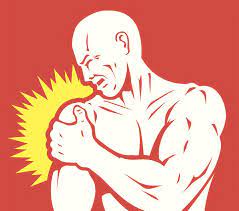
Stretching should be part of your daily routine, whether you exercise or not. It does not have to involve a huge amount of time, but stretching can end up having huge results.
Benefits of Stretching Before and After Exercise:
- Reduce muscle tension and helps the body feel relaxed
- Avoid joint strains
- A Strong pre-stretched muscle resists stress better than a strong unstretched muscle
- Reduce risk of back injuries
- Prepare muscle/joints for exercise
- Improve circulation
- Which will increase energy levels
- Which reduces post-athletic soreness and recovery time
- Promote cell growth and organ function
- Regulates blood pressure
- Reduce muscle soreness
- Helps coordination by allowing freer and easier movement
- Avoid tired, stiff and sore muscles
- Better flexibility
- Improved Range of Motion
- Results in body working less for the same movements without stretching
- Develop Body Awareness
- Improves Posture
- Increase in overall mood
- Research shows stretching aids in release of endorphins
- Post-exercise stretch will slow down breathing and heart rate and bring the body and mind bck to a resting state
Basic Techniques of Stretching:
- Do not stretch too far, begin with a slight stretch and increase it after you feel your body relax
- Hold stretch in comfortable position, once you feel the tension subside, you can progress the stretch further
- Breathe slowly deeply and naturally-exhale
- Do not bounce – this tightens the muscles your are trying to stretch.
Avoid Stretching If:
- The joint is inflamed or infected
- Recent bone fracture, sprain or strain
Different Types of Stretches:
- Static: stretching a muscle to the point of mild discomfort and holding that position, usually for 30 seconds or longer
- Dynamic: performing gentle repetitive movements, such as arm circles/swings and gradually increasing the range of motion of the movement
- Pre-Contractions Stretching:
- Proprioceptive Neuromuscular Facilitation (PNF): holding a stretch while contracting and relaxing the muscle. For Example hamstring stretch – lying on back leg straight in air in a band or against the wall and contracting quads and holding to then relax and take the hamstrings into a further stretch
- Muscle Energy Technique (MET): isometric (static) contractions of the muscle that is being stretched to assist in lengthening the muscle
Stretching Resources:
https://www.mayoclinic.org/healthy-lifestyle/fitness/in-depth/stretching/art-20047931